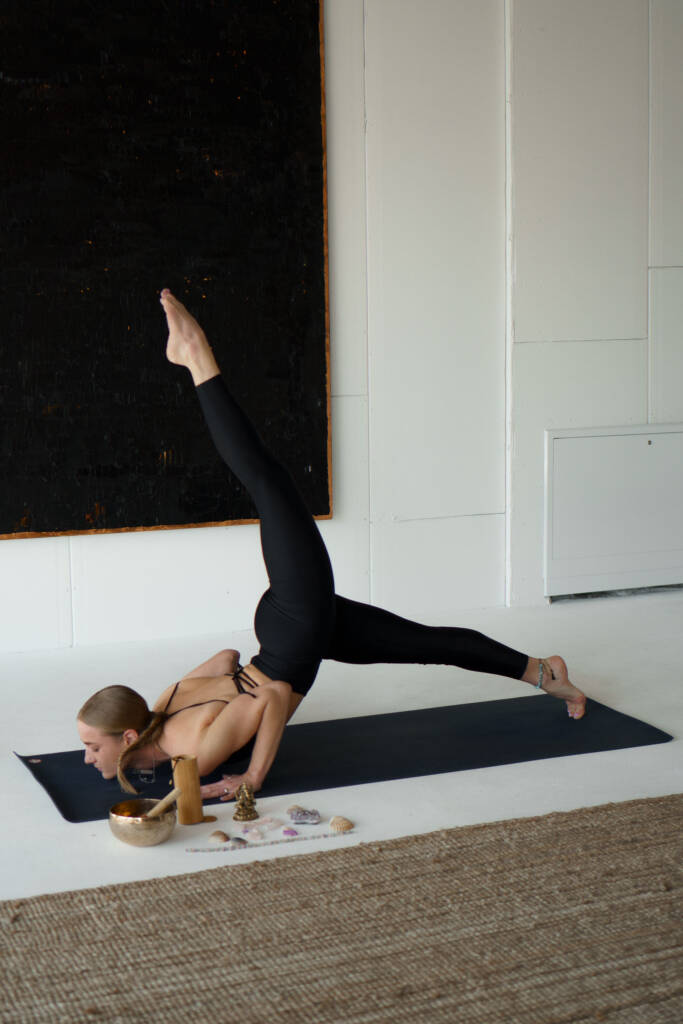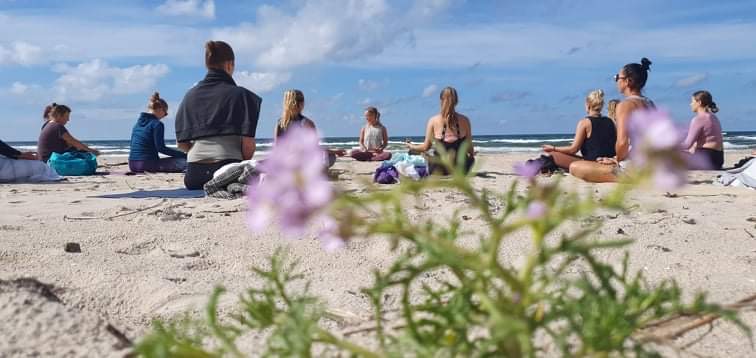Studio classes is the best way to get into the traditional yoga journey, connect to your soulmates and enjoy the benefits of practice together.


In studio classes I always create special atmosphere thsat helps you forget about your dily duties so you can fully enjoy your time with your body and spirit.
There are different types of studio classes with different benefits, all of them ar suitable for beginers and also advanced practitioners.
Slow Flow –
Slow Flow Yoga is a style of yoga that combines a sequence of slow, gentle movements with focused breathing and sometimes meditation. Slow Flow Yoga is similar to Hatha Yoga, but with a smoother flow of movement and less physical effort.
When practicing Slow Flow Yoga, movements are performed slowly, smoothly and in coordination with the breath, allowing for a deep awareness of each movement. Movements are sequenced to create a “flow” of poses that can include standing, seated, and reclining postures. Classes are typically calm and meditative, with the main goal of releasing stress and connecting the mind, breath, and body.
The benefits of Slow Flow Yoga for the mind and body include:
- Improved flexibility: Slow Flow Yoga helps to improve flexibility and muscle stretching
by using slow and flowing movements. - Reduced stress and anxiety: Slow Flow Yoga’s meditative nature can help reduce stress
and anxiety levels, leading to better mental and emotional wellbeing. - Improved breathing technique: Slow Flow Yoga includes focused breathing techniques
that can help to improve respiratory function and promote deeper relaxation. - Improved posture and balance: Slow Flow Yoga helps to improve posture and balance
by promoting body awareness and alignment in each pose. - Increased mindfulness: Slow Flow Yoga promotes mindfulness and awareness of the
present moment, helping to improve concentration, focus and mental clarity. Overall, Slow Flow Yoga is a gentle, relaxing and meditative practice that can help to improve both physical and mental wellbeing. It is suitable for both beginners and experienced practitioners who want to combine movement with meditation and improve their physical and mental health.
Yin yoga –
Yin Yoga is a type of yoga that focuses on holding poses for longer periods of time, typically ranging from 3-5 minutes or even longer. It is a slow-paced and meditative style of yoga that targets the connective tissues of the body, such as the ligaments, fascia, and joints, rather than the muscles. The practice often involves seated or lying down postures, and the goal is to surrender into the pose and find a deep sense of relaxation and release. Yin Yoga has numerous benefits, including:
- Improved flexibility: By holding poses for longer periods of time, the connective tissues are able to stretch and become more pliable, leading to improved flexibility over time.
- Stress relief: Yin Yoga is a meditative practice that encourages relaxation and helps to calm the mind. This can help to reduce stress and anxiety.
- Increased circulation: The deep, slow breathing in Yin Yoga can help to increase blood flow and circulation throughout the body.
- Better joint mobility: Yin Yoga can help to increase joint mobility and range of motion, especially in areas of the body that are prone to stiffness or tightness. • Enhanced energy flow: Yin Yoga is based on the concept of meridians in traditional Chinese medicine, which are energy channels that run through the body. By stretching and releasing tension in these areas, energy can flow more freely throughout the body.
Overall, Yin Yoga is a gentle yet powerful practice that can help to improve flexibility, reduce stress, and promote overall health and wellbeing.
Power yoga –
Vinyasa flow yoga is a type of yoga that emphasises the connection between breath and movement, and the flowing transitions between poses. In a vinyasa flow class, students typically move through a series of postures that are coordinated with their breath, with each movement flowing smoothly into the next. The postures can range from gentle and restorative to more challenging and strength-building.
Some of the benefits of practicing vinyasa flow yoga include:
- Improved flexibility and strength: The flowing nature of vinyasa yoga helps to stretch
and tone the muscles, improving flexibility and building strength. - Stress reduction: The focus on breath and movement in vinyasa yoga can help to
reduce stress and anxiety, promoting relaxation and a sense of calm. - Increased cardiovascular health: The continuous movement and coordination of breath and movement in vinyasa yoga can provide a cardiovascular workout, improving heart
health and circulation. - Better balance and coordination: The flowing transitions between poses in vinyasa yoga
can improve balance and coordination, which can be especially beneficial for older
adults. - Mind-body connection: Vinyasa yoga encourages practitioners to be fully present in the
moment and to connect with their body and breath, promoting a deeper sense of awareness and mindfulness.




